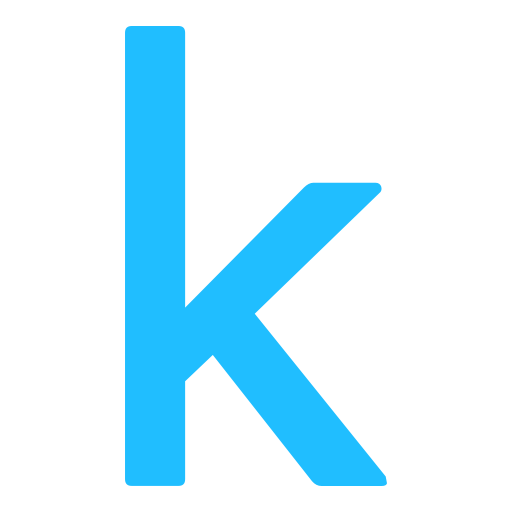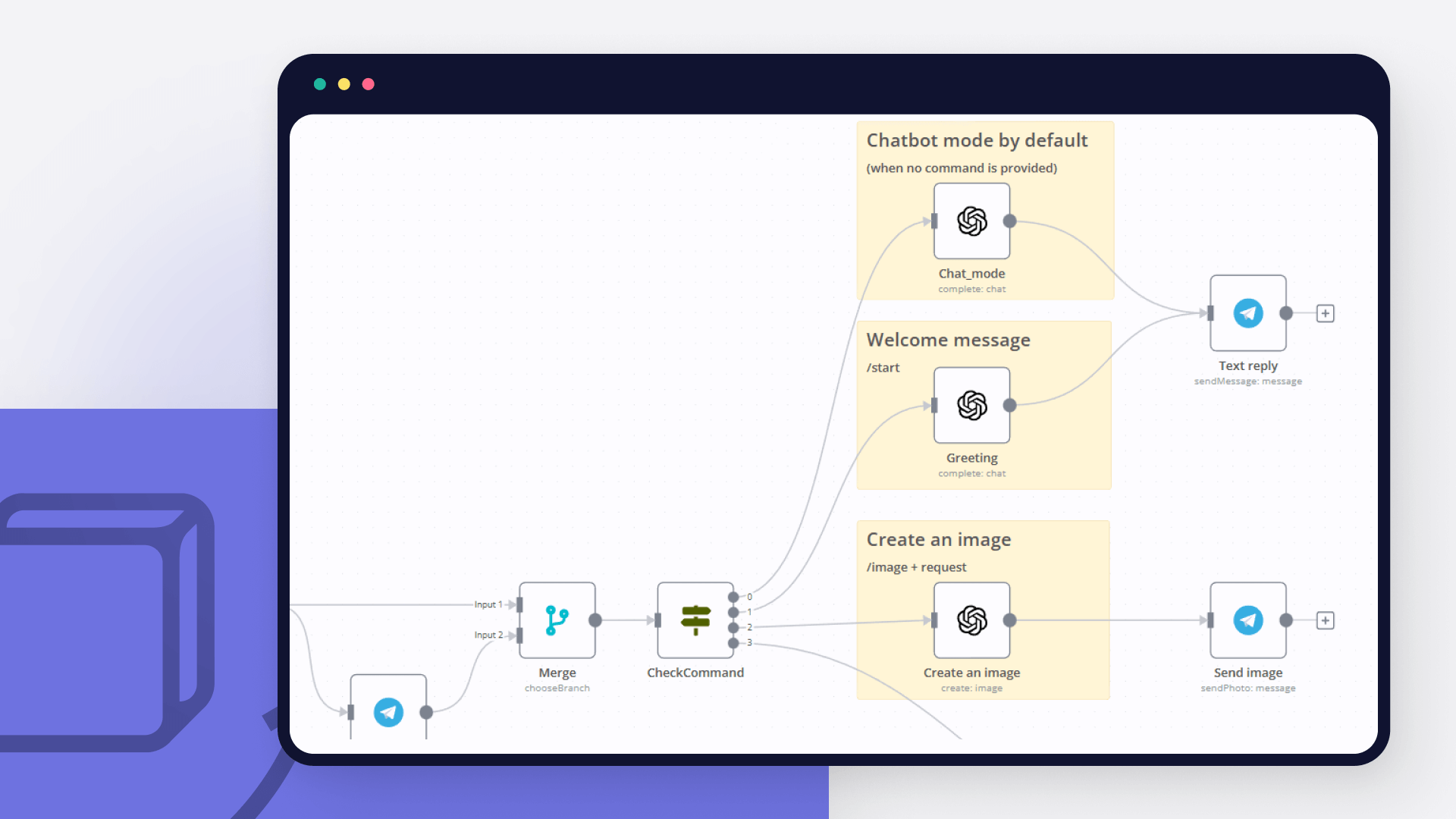Kaggle and Telegram integration

How to connect Kaggle and Telegram
Create a new workflow and add the first step
In n8n, click the "Add workflow" button in the Workflows tab to create a new workflow. Add the starting point – a trigger on when your workflow should run: an app event, a schedule, a webhook call, another workflow, an AI chat, or a manual trigger. Sometimes, the HTTP Request node might already serve as your starting point.
Build your own Kaggle and Telegram integration
Create custom Kaggle and Telegram workflows by choosing triggers and actions. Nodes come with global operations and settings, as well as app-specific parameters that can be configured. You can also use the HTTP Request node to query data from any app or service with a REST API.
Supported API Endpoints for Kaggle
List competitions
List available competitions
List competition files
List competition files
Download competition files
Download competition files
Submit to a competition
Make a new competition submission
List competition submissions
Show your competition submissions
List datasets
List available datasets.
List files
List dataset files.
Download dataset files
Download dataset files.
Create dataset
Create a new dataset after initializing metadata.
Create dataset version
Create a new version of an existing dataset with version notes.
Download metadata
Download metadata for an existing dataset using its URL suffix.
Get dataset creation status
Get the status of the dataset creation process using its URL suffix.
List kernels
List available kernels based on specified filters.
Initialize kernel metadata
Initialize metadata for a new kernel setup.
Push code to kernel
Push new code to a kernel and execute it.
Pull code from kernel
Pull down the latest code from a kernel.
Get kernel output
Retrieve data output from the latest run of a kernel.
Get kernel run status
Display the status of the latest kernel run.
Get model
Retrieve a specific model using its URL suffix.
List models
Get a list of models with optional sorting and filtering.
Initialize model metadata
Create a metadata file for a new model.
Create model
Create a new model with specified metadata.
Delete model
Delete a model using its URL suffix.
Update model
Update a model by fetching its metadata file first.
Get model instance
Retrieve a model instance using its URL suffix.
Initialize model instance
Initialize a metadata file for creating a model instance.
Create model instance
Create a new model instance after initializing metadata file.
Delete model instance
Delete a model instance using its URL suffix.
Update model instance
Update a model instance after fetching its metadata file.
Create model version
Create a new version for a model instance.
Download model instance version
Download a model instance version using its specific URL suffix.
Delete model instance
Delete a model instance version using its specific URL suffix.
View current config values
View the current configuration values set in the system.
Set a configuration value
Set a new value for a specific configuration parameter.
Clear a configuration value
Clear an existing configuration value by name.
To set up Kaggle integration, add the HTTP Request node to your workflow canvas and authenticate it using a generic authentication method. The HTTP Request node makes custom API calls to Kaggle to query the data you need using the API endpoint URLs you provide.
See the example hereThese API endpoints were generated using n8n
n8n AI workflow transforms web scraping into an intelligent, AI-powered knowledge extraction system that uses vector embeddings to semantically analyze, chunk, store, and retrieve the most relevant API documentation from web pages. Remember to check the Kaggle official documentation to get a full list of all API endpoints and verify the scraped ones!
Telegram supported actions
Get
Get up to date information about a chat
Get Administrators
Get the Administrators of a chat
Get Member
Get the member of a chat
Leave
Leave a group, supergroup or channel
Set Description
Set the description of a chat
Set Title
Set the title of a chat
Answer Query
Send answer to callback query sent from inline keyboard
Answer Inline Query
Send answer to callback query sent from inline bot
Get
Get a file
Delete Chat Message
Delete a chat message
Edit Message Text
Edit a text message
Pin Chat Message
Pin a chat message
Send Animation
Send an animated file
Send Audio
Send a audio file
Send Chat Action
Send a chat action
Send Document
Send a document
Send Location
Send a location
Send Media Group
Send group of photos or videos to album
Send Message
Send a text message
Send and Wait for Response
Send a message and wait for response
Send Photo
Send a photo
Send Sticker
Send a sticker
Send Video
Send a video
Unpin Chat Message
Unpin a chat message
Kaggle and Telegram integration details
Kaggle and Telegram integration tutorials

How to create an AI bot in Telegram
Learn how to create an AI chatbot for Telegram with our easy-to-follow guide. Ideal for users who are interested in exploring the realm of bot development without coding.

How to build a multilingual Telegram bot with low code
Learn how to build a multilingual bot for Telegram with a few lines of JavaScript code, a NocoDB database, and conditional logic in an automated workflow.

Create a toxic language detector for Telegram in 4 steps
Leverage the power of automation and machine learning to enable kinder online discussions.

6 e-commerce workflows to power up your Shopify store
Want to power up your online business and win back time? Discover how no-code workflow automation can help!

How to automate your reading habit just in time for World Poetry Day
Learn how to create a no-code workflow that gets international poems, translates them into one language, and sends you a poem in Telegram every day.

Using automation to boost productivity in the workplace
Instead of using IFTTT or Zapier, which can be pretty limiting on a free tier, I decided to try n8n, which is a fair-code licensed tool.
FAQ
Can Kaggle connect with Telegram?
Can I use Kaggle’s API with n8n?
Can I use Telegram’s API with n8n?
Is n8n secure for integrating Kaggle and Telegram?
How to get started with Kaggle and Telegram integration in n8n.io?
Need help setting up your Kaggle and Telegram integration?
Discover our latest community's recommendations and join the discussions about Kaggle and Telegram integration.
Looking to integrate Kaggle and Telegram in your company?
The world's most popular workflow automation platform for technical teams including
Why use n8n to integrate Kaggle with Telegram
Build complex workflows, really fast



